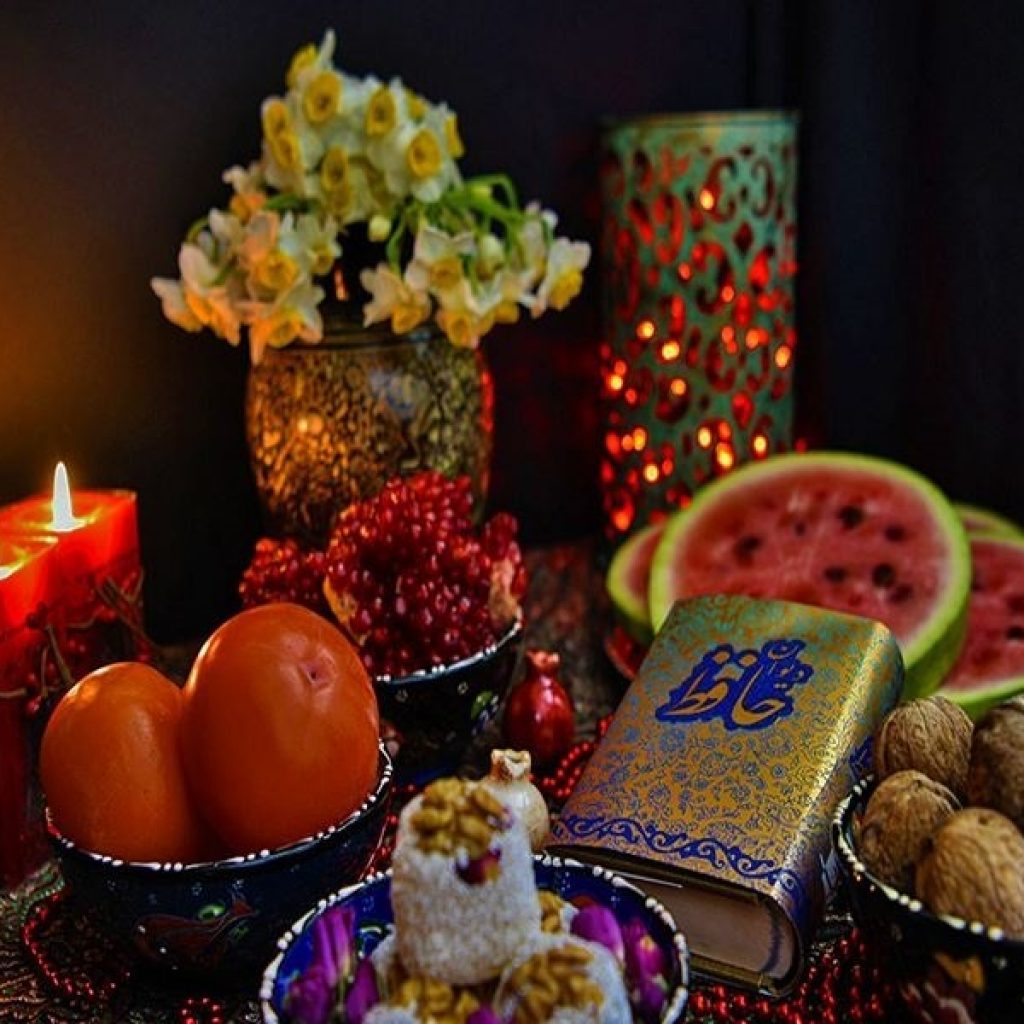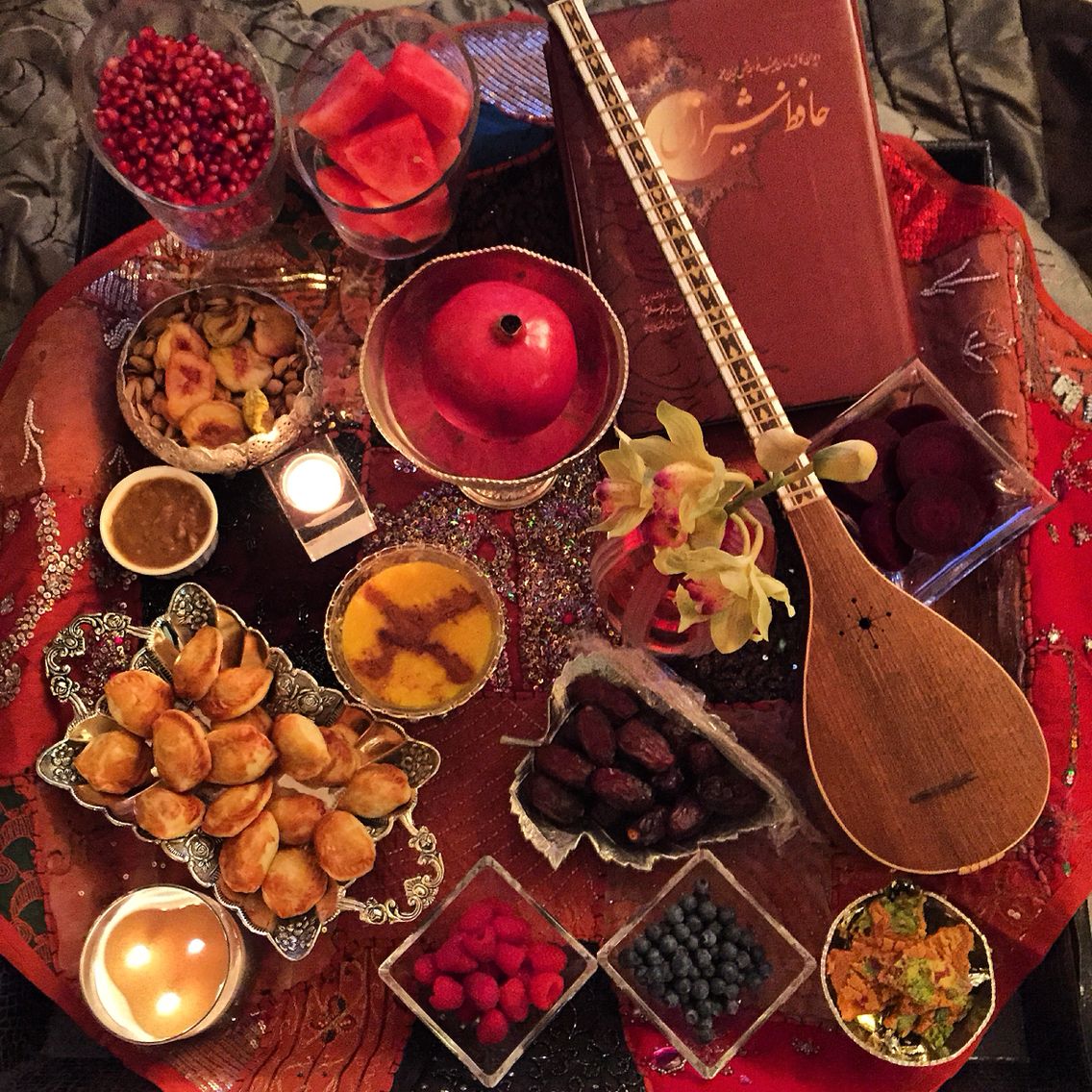Yalda Night In Iran: A Timeless Celebration Of Light And Family
Table of Contents
- What is Yalda Night and Its Profound Meaning?
- A Journey Through Time: The Ancient Roots of Yalda
- The Heart of the Celebration: Yalda Traditions and Rituals
- Yalda in the Modern Era: Evolving Traditions
- Global Recognition and the Iranian Diaspora
- The Enduring Symbolism of Yalda Night
What is Yalda Night and Its Profound Meaning?
Yalda Night, or Shab-e Yalda, is an annual winter ceremony that manifests the traditional concept of light and good prevailing over darkness and evil in the ancient Iranian religion. It is celebrated as the longest and darkest night of the year, marking the winter solstice. This magical night typically falls on December 21st or 22nd each year, depending on the Gregorian calendar, specifically occurring between sunset on December 21st and sunrise on December 22nd. For Iranians, this is not merely an astronomical event but a deeply symbolic occasion. It symbolizes the victory of light over darkness, the triumph of warmth and life over the cold, barren grip of winter. It's a powerful reminder that even after the longest period of obscurity, the sun will inevitably return, bringing with it renewed hope and vitality. The celebration begins at sunset on the last day of autumn (30th of Azar on the Iranian calendar) and concludes with the sunrise on the first day of winter (1st of Dey). This transition from the year's longest night to the dawn of a new season encapsulates the core message of Yalda: perseverance through hardship and the ultimate triumph of optimism.A Journey Through Time: The Ancient Roots of Yalda
The roots of Yalda Night stretch back millennia, making it one of the most ancient festivals in Iran. Historians and cultural scholars trace its origins to pre-Zoroastrian times, linking it to the worship of Mithra, the ancient Persian god of light, truth, and covenants. In ancient Iran, agricultural societies deeply revered the sun as the source of life and fertility. The winter solstice, with its extreme darkness, was a moment of apprehension but also of profound significance – the turning point after which the sun would begin its journey back, signifying the rebirth of nature. In the past, Iranians gathered at the base of the Alborz mountains, patiently awaiting the sunrise after the longest night, a testament to their deep connection with natural cycles and their faith in the sun's return. The festival's name, "Yalda," is believed to be derived from a Syriac word meaning "birth" or "nativity," referring to the birth of the sun god Mithra. This historical depth underscores why Yalda Night in Iran remains such a powerful and enduring cultural touchstone. Its continuous celebration through various empires, religions, and societal shifts speaks volumes about its inherent resonance with the human spirit's need for hope and renewal. In a significant acknowledgment of its cultural importance, Yalda Night was officially added to Iran’s list of national treasures during a special ceremony in 2008, cementing its place as a vital part of the nation's heritage.The Heart of the Celebration: Yalda Traditions and Rituals
At its core, Yalda is a family festival. It’s a time when family and friends gather, often at the home of the eldest members, to celebrate the winter solstice. The night is filled with warmth, laughter, and cherished rituals that have been passed down through generations. These traditions are not merely customs but are imbued with deep symbolism, reflecting the hopes and values of Persian culture. The collective joy and shared experience of Yalda Night in Iran create an unbreakable bond among loved ones.The Symbolic Fruits: Pomegranates and Watermelons
No Yalda celebration is complete without an abundance of specific fruits, particularly pomegranates and watermelons. These are not just delicious treats; they are central to the night's symbolism: * **Pomegranates:** With their vibrant red color, pomegranates symbolize the glow of dawn, the cycle of life, and the warmth of the sun. Their numerous seeds represent fertility, abundance, and the many blessings of life. Peeling and sharing pomegranates is a communal act, often accompanied by lively conversation. * **Watermelons:** Often round and red inside, watermelons are believed to ward off illness and ensure good health throughout the coming winter. Their freshness and sweetness are a welcome contrast to the cold outside, symbolizing vitality and the promise of a bountiful summer. These fruits, along with other seasonal produce like nuts (ajil), dried fruits, and various sweets, are meticulously arranged on a *korsi* – a low table covered with a blanket, beneath which a heater is placed, allowing family members to gather around and keep warm. This setup epitomizes the cozy, intimate atmosphere of Yalda Night in Iran.The Magic of Hafez: Divination and Poetry
One of the most beloved and unique traditions of Yalda Night is the reading of poetry, especially from the Divan of Hafez, the revered 14th-century Persian poet. Families gather, and often the eldest member, or someone with a beautiful voice, reads aloud from Hafez's lyrical verses. This is not just a casual reading; it's often accompanied by *Fal-e Hafez* (divination by Hafez). Each person makes a wish or asks a question, then randomly opens the Divan. The first poem they see is interpreted as an answer or guidance for their query. Hafez's poetry, known for its profound wisdom, mystical insights, and beautiful metaphors, often touches upon themes of love, longing, the fleeting nature of life, and the triumph of light. Yalda Night is the longest and darkest night of the year, symbolizing many things in Persian poetry, including separation from a loved one, loneliness, and waiting. Hafez's verses, therefore, resonate deeply, offering comfort, reflection, and a sense of shared human experience. This ritual reinforces the intellectual and spiritual depth of Yalda Night in Iran.Feasting and Fellowship: Yalda Night Cuisine
Beyond fruits and nuts, a special meal is often prepared for Yalda Night. While specific dishes can vary by region, a common and cherished meal is *Sabzi Polo ba Mahi* (herbed rice with fish). The green herbs in the rice symbolize freshness and renewal, while fish represents prosperity. Other traditional foods might include various stews, pastries, and, of course, plenty of hot tea to keep everyone warm through the long night. The emphasis is less on the extravagance of the meal and more on the act of sharing it together. It's a night for storytelling, riddles, games, and simply enjoying the company of loved ones. Grandparents recount tales of old, children play, and the warmth of human connection fills the longest night, making it feel short and joyful. This communal aspect is what truly defines the spirit of Yalda Night in Iran.Yalda in the Modern Era: Evolving Traditions
While Yalda Night has roots that stretch back millennia, its essence and celebration have continually evolved, adapting to the changing world. In modern times, Yalda remains a cherished celebration but with nuances that reflect contemporary life. The core values of family gathering, storytelling, and celebrating light over darkness persist, but the ways in which these are expressed can vary. For instance, while the *korsi* remains a traditional centerpiece, many urban homes might opt for a more conventional table setting adorned with Yalda motifs. The rise of social media has also given Yalda a new platform, with people sharing photos of their festive tables, Hafez readings, and family moments online, connecting Iranians globally. Interestingly, in recent years, modern symbols like Christmas trees have gradually intertwined with the Yalda décor in some households, reflecting a broader cultural exchange and a blend of traditional and contemporary aesthetics. This evolution shows the festival's resilience and its capacity to remain relevant while honoring its ancient heritage. Despite modern influences, the fundamental spirit of Yalda Night in Iran – that of warmth, unity, and hope – remains undiminished.Global Recognition and the Iranian Diaspora
Beyond Iran’s borders, Yalda Night has garnered international recognition, transforming from a purely national festival into a global celebration of Persian heritage. This expansion is largely due to the vibrant Iranian diaspora communities spread across the globe. As Iranians have migrated, they have carried their cherished traditions with them, ensuring that Yalda is celebrated in homes and cultural centers from North America to Europe, Australia, and beyond. The festival has transcended cultural boundaries, inviting people of diverse backgrounds to partake in its festivities, fostering understanding and appreciation for Persian culture. Yalda Night is not only celebrated in Iran but also by people in other countries such as Afghanistan, Tajikistan, Uzbekistan, and Turkmenistan. It is also observed in Kurdistan, Azerbaijan, and parts of Turkey. This widespread observance across "Greater Iran" and by diaspora communities highlights the festival's deep cultural resonance and its ability to unite people through shared heritage. These global celebrations often feature similar traditions: the gathering of families, the sharing of pomegranates and watermelons, and the reading of Hafez, creating a worldwide tapestry of Yalda joy.The Enduring Symbolism of Yalda Night
Yalda Night is a beautiful ancient Iranian celebration, a poignant reminder of the cyclical nature of life and the eternal struggle between light and darkness. It is a testament to the human spirit's resilience, its capacity for joy, and its unwavering hope for brighter days. The festive night marks the winter solstice, the longest night of the year, and has been celebrated annually by Iranians since antiquity. Through its rich blend of history, poetry, and cherished rituals, Yalda continues to symbolize hope and unity, underpinning the enduring triumph of light over darkness. It teaches us that even in the deepest shadows, the promise of dawn is always present. It's a night to reflect on the past year, to appreciate the warmth of family and friends, and to look forward to the future with optimism. Enjoy your time with loved ones during this special occasion, embracing the profound meaning of Yalda Night in Iran.Conclusion
Yalda Night in Iran is far more than just a date on the calendar; it is a living, breathing tradition that connects generations, celebrates cultural heritage, and embodies universal themes of hope and renewal. From its ancient origins rooted in the worship of light to its modern-day manifestations across the globe, Yalda continues to be a powerful symbol of unity, resilience, and the ultimate victory of good over evil. As the longest night of the year gives way to the first rays of winter's sun, the spirit of Yalda reminds us to cherish our loved ones, embrace the warmth of human connection, and always look forward to the light. We hope this exploration has shed some light on the beauty and depth of this remarkable Persian festival. What are your thoughts on Yalda Night? Have you ever participated in a Yalda celebration, or are you inspired to learn more? Share your comments below! Don't forget to share this article with friends and family who might be interested in learning about this unique cultural gem.- Jean Michel Jarre Spouse
- Daniel Travanti Wife
- Chloe Surreal Nationality
- Mario Casas Sierra
- Louise Ford

Yalda night - IRANdirectory

Yalda Night (Shabe Yalda): Iranians Celebrating the Longest Night of

Yalda Night Wallpapers - Wallpaper Cave